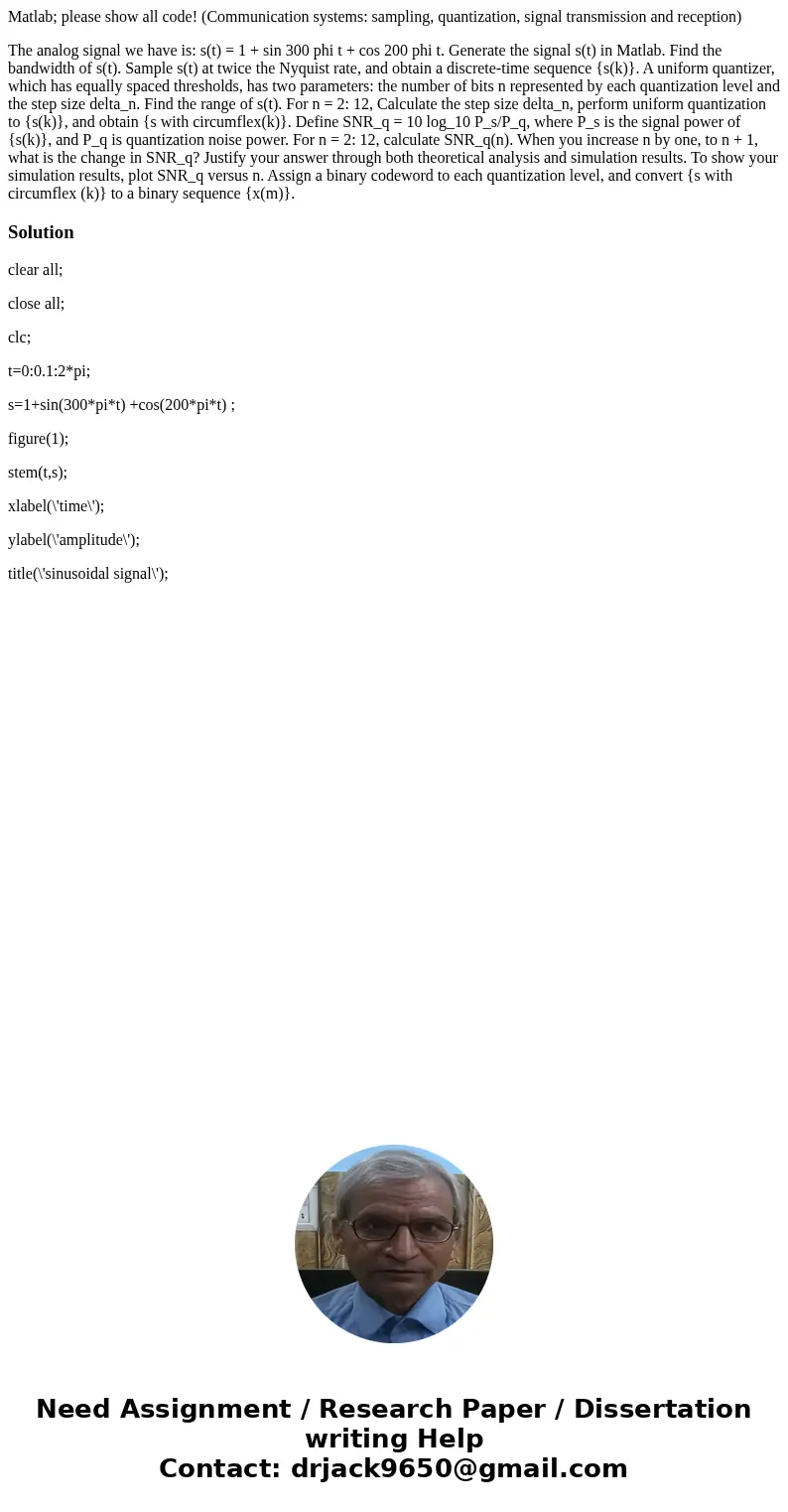Matlab please show all code Communication systems sampling q
Matlab; please show all code! (Communication systems: sampling, quantization, signal transmission and reception)
The analog signal we have is: s(t) = 1 + sin 300 phi t + cos 200 phi t. Generate the signal s(t) in Matlab. Find the bandwidth of s(t). Sample s(t) at twice the Nyquist rate, and obtain a discrete-time sequence {s(k)}. A uniform quantizer, which has equally spaced thresholds, has two parameters: the number of bits n represented by each quantization level and the step size delta_n. Find the range of s(t). For n = 2: 12, Calculate the step size delta_n, perform uniform quantization to {s(k)}, and obtain {s with circumflex(k)}. Define SNR_q = 10 log_10 P_s/P_q, where P_s is the signal power of {s(k)}, and P_q is quantization noise power. For n = 2: 12, calculate SNR_q(n). When you increase n by one, to n + 1, what is the change in SNR_q? Justify your answer through both theoretical analysis and simulation results. To show your simulation results, plot SNR_q versus n. Assign a binary codeword to each quantization level, and convert {s with circumflex (k)} to a binary sequence {x(m)}.Solution
clear all;
close all;
clc;
t=0:0.1:2*pi;
s=1+sin(300*pi*t) +cos(200*pi*t) ;
figure(1);
stem(t,s);
xlabel(\'time\');
ylabel(\'amplitude\');
title(\'sinusoidal signal\');

 Homework Sourse
Homework Sourse